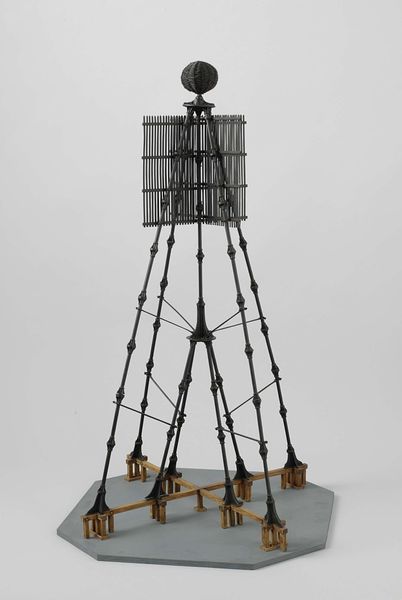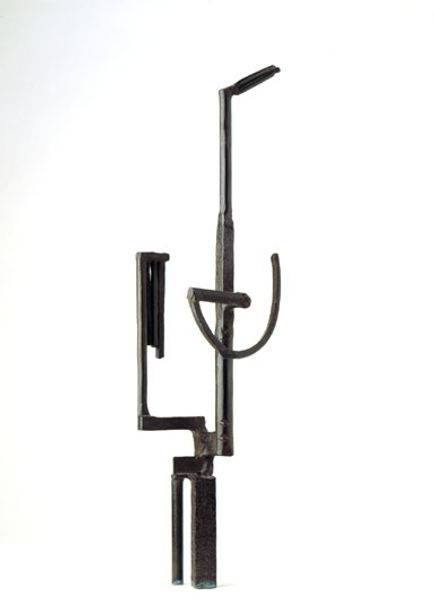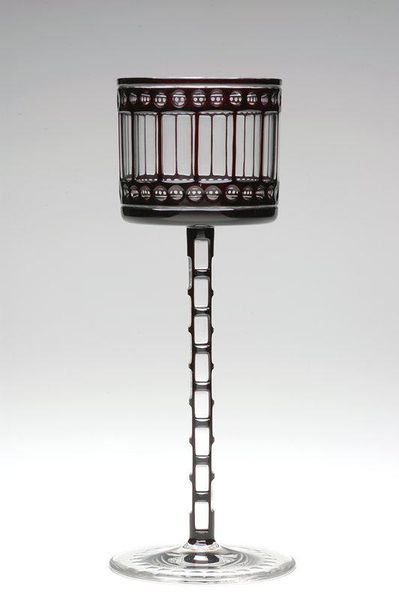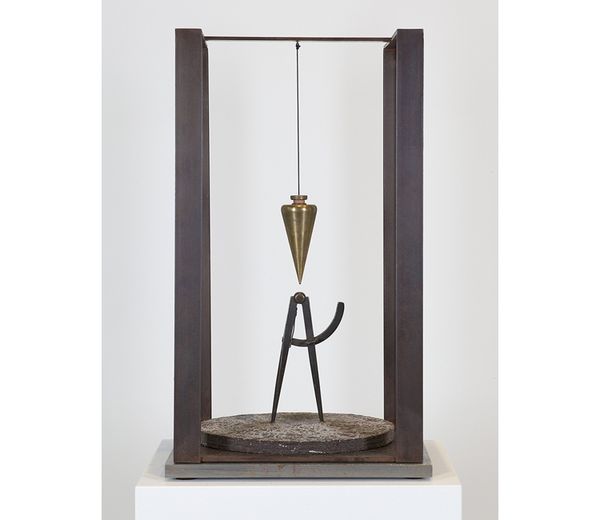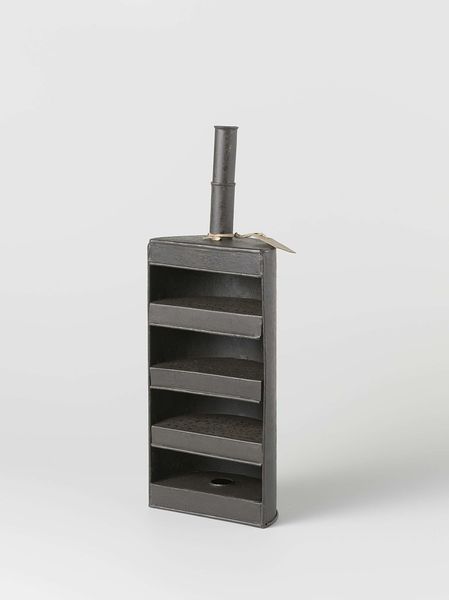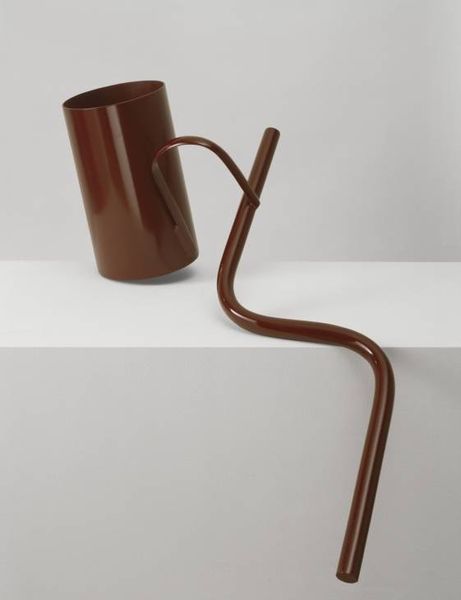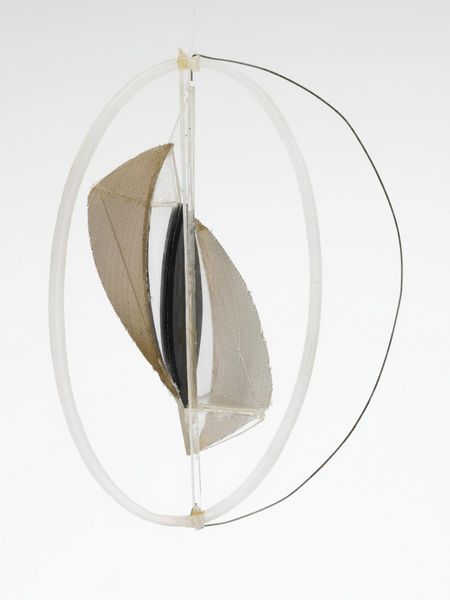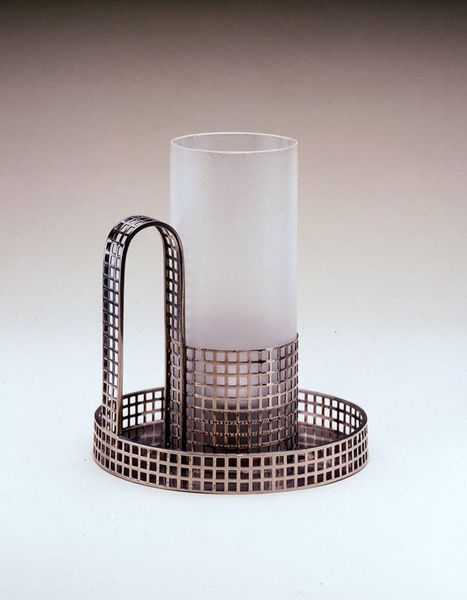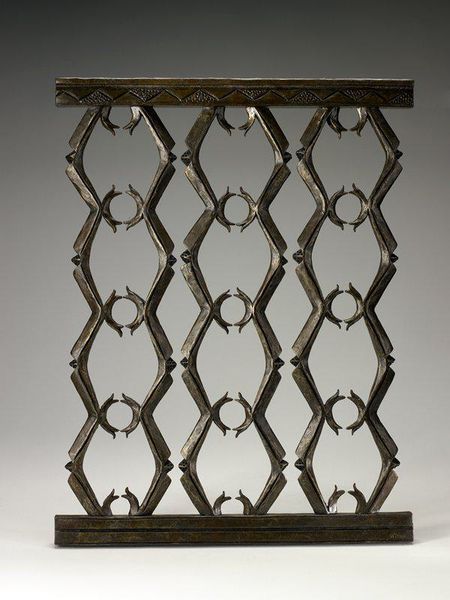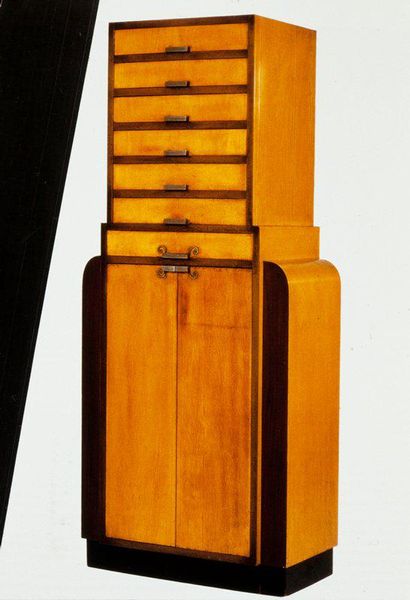
steel, metal, found-object, sculpture, wood
#
steel
#
metal
#
found-object
#
sculpture
#
united-states
#
wood
#
modernism
Dimensions: 29 x 18 1/2 x 12 1/2in. (73.7 x 47 x 31.8cm)
Copyright: No Known Copyright
Nikola Tesla created this high-frequency discharge demonstrator, now at the Minneapolis Institute of Art, as a hands-on illustration of electrical principles. There's something beautiful about the materials he chose: the rich gleam of the copper coil against the stark, matte black of the frame. It's a study in contrasts – smooth versus textured, conductor against insulator. Look closely at how the copper is wound, each loop perfectly spaced, almost as if it were drawn. I love how you can trace the energy's potential path, jumping across the gap between the two spheres. It reminds me that art, like science, is a process of discovery, an ongoing experiment. Tesla's coil isn't just a device; it's a sculpture of an idea. It makes me think of Sol LeWitt, who similarly wanted to lay bare the underlying structure of things. Art and science, they’re not so different.
Comments
minneapolisinstituteofart almost 2 years ago
⋮
Tesla coils transmit electrical energy between two magnetically coupled coils. They were used until the 1920s in wireless telegraphy—to send messages via Morse code, for example—and in more than hundred mad-scientist-style movies, such as Frankenstein in 1931. This tabletop Tesla coil was likely made for science classes, producing long, impressive sparks in the air and lighting a fluorescent tube held at a distance. Since a Tesla coil is really a radio transmitter without an antenna, Tesla is credited with helping invent the radio—he filed the first radio patent. And his legacy continues today, with his namesake battery-powered automobile and Tesla coils that are still made by hobbyists, demonstrating the beauty of machines that produce electricity.
Join the conversation
Join millions of artists and users on Artera today and experience the ultimate creative platform.
